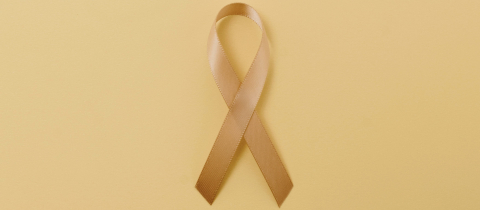Scientifically speaking, it’s not very pleasing.
A jolly old man with reindeer flying high, criss-crossing the night sky?
It makes for a charming story, but surely it must be phony!
How can he be here and there, delighting children everywhere,
Giving little girls splendid toys, even remembering naughty boys?
Surely, the old gent must be a fake; who would do all this just for goodness sake?
But stop! The children’s laughter and smiles are as real as can be,
And consequently, so is he!
From life’s little trials he spells relief,
And it is all through the power of belief!
The concept of belief may appear to be a strange topic for scientific discussion. After all, science should be based upon facts, not on hopes and dreams. But there is an increasing amount of evidence that what goes on in our minds may be tied to what goes on in our bodies. Perhaps John Milton, the British poet put it best when he said that “the mind can make a heaven out of hell and hell out of heaven.”
Imagine that you are awakened by a phone ringing in the middle of the night. Chances are your heart will start to race. There has been no physical stimulus, but the apprehension of bad news has certainly affected a physiological function. The mind and body have connected. Is it not reasonable to suggest that this connection can also work to our benefit? If negative thoughts can have an adverse effect, may we not benefit from positive thoughts? Medical history tells us that this may indeed be the case.
We know that sometimes the soothing hand of a physician is enough to slow a rapid pulse and that a few reassuring words can allay anxiety. Surely this speaks of a connection between the body and the mind. Actually, isn’t this how doctors maintained their exalted place in society throughout history? Up to the last century, their medical armamentarium was filled with ineffective procedures ranging from bloodletting to purging. Prescriptions included rhinoceros horn, snake oil and other useless ingredients. Yet, patients improved, and the physician usually got the credit.
Many ailments are self-limiting and will resolve whether therapy is initiated or not. Voltaire, the famous French philosopher, once remarked that the job of the physician is to amuse the patient while nature cures the disease. That “cure” may be helped along if the “amusement” includes some sort of intervention even if it has no scientific basis. After all, Anton Mesmer effected “cures” by having patients hold on to magnetized rods to draw disease out of their body. The “mesmerized” patients were experiencing the placebo effect, still one of the cornerstones of the practice of medicine.
Tribal medicine men and shamans have long been aware of the value of the placebo effect. They learned that if they could show physical evidence of spiritual strength, they could foster belief in their abilities and their healing power would be greatly increased. Since it was widely believed that illness was some sort of impurity that could be extracted from the body, healers would chant and dance in an attempt to drive out these evil spirits. And they discovered that if the source of the disease could be visibly snatched from the body at the proper moment, the patient would immediately feel better. The sudden “extraction” of a piece of bone or a tuft of fur by sleight of hand often resulted in a seemingly miraculous, albeit often temporary, improvement. In medieval Europe, itinerant physicians commonly removed stones from the heads of the sick, using standard magicians’ techniques, often with dramatic results. “Psychic surgeons” in the Philippines and Brazil today use similar methods to “remove” tumours from the body without making an incision.
What’s going on here? How can there be physical improvement without effective physical intervention? Scientists have tried to explain the power of belief by invoking the chemistry of the nervous system. Enkephalins and endorphins are the body’s natural pain killers and mood modifiers and the suggestion has been that their concentrations increase in response to belief or prayer. This may be so, but the truth is that we are far from being able to describe the mysteries of the mind in terms of molecules. How the mind exerts its effects on the body may be debatable, but that it does, is not. Just consider the following.
In an interesting study, students were told that they would be testing a new drug, but in fact all received placebos. Nevertheless, 75% of the participants reported side effects that included depression, sedation, restlessness, tremors, headaches and a slowed heart beat. Why? Because they believed that medications have side effects, and therefore they experienced them! In another experiment, volunteers were given either a pink or a blue sugar pill and were told that the pill was either a sedative or a stimulant. Only 3 subjects said there was no effect while the others reported that the “medication” either calmed them down or revved them up! Numerous other studies have clearly demonstrated that placebos can alleviate pain, as much as 30-40% of the time. It may be “all in the mind,” but does that really matter as long as the patient feels better?
Placebos can have a very significant effect on illness, but their effect on disease is unclear. That may sound curious, but it really isn’t. Illness is what a patient feels, while disease is the existence of a physical problem. Someone who believes in the benefits of apple cider vinegar or urine therapy or any of a host of nonsensical treatments may indeed feel better for a while even though the underlying disease relentlessly marches on. This may be quite acceptable, even desirable, as long as the “alternative” treatment has not been chosen over scientifically proven procedures which really may help alter the course of the disease. But if potentially effective treatments have been forsaken, then belief in questionable cures may indeed prove harmful.
The possibility that the mind can modify the course of disease cannot be dismissed. Yogis can slow their hearts through meditation and biofeedback techniques have been used to lower blood pressure. A Dartmouth Medical School study showed that patients who had strong religious beliefs did better after bypass surgery. In Israel, religious kibbutzim have a lower disease rate than secular ones. Perhaps this is because prayer can induce a state of calm with decreased blood pressure and heart rate. But this is still a long way from the claim of some alternative practitioners that “positive thinking” can cure disease. Unfortunately, while this makes for an appealing story, there is not much scientific evidence to back it up. A landmark paper in the New England Journal of Medicine concluded that among cancer patients “positive thinkers” did not have a better outcome in terms of longevity, but did have a better quality of life. Because they had hope! And without hope, there is nothing.
As we have seen, science doesn’t always have the answer,
It cannot as yet cure cancer.
But, I have an inkling, neither can positive thinking.
Belief and medicine though, are a potent alliance
Together they make for excellent science!
The power of the mind, can be good or bad,
The outcome, happy or sad.
But some beliefs are harmless and pure,
And should for generations endure!
It matters not if it’s lighting candles for Hanukkah
Or hanging socks for dear old Santa;
What matters is the happiness and joy
That belief brings to every girl and boy.
So dear reader, in these thoughts I hope you find some reason,
And please believe me when I wish you the best for the Holiday Season.







